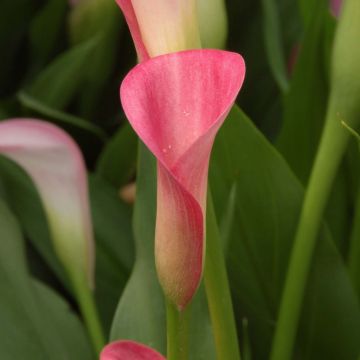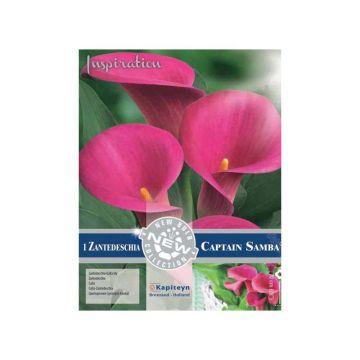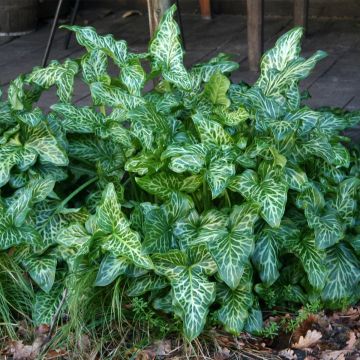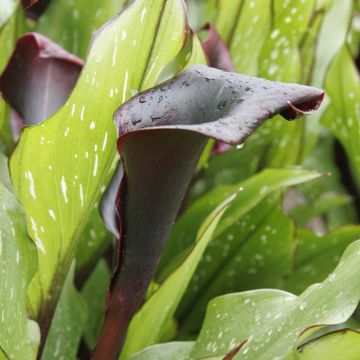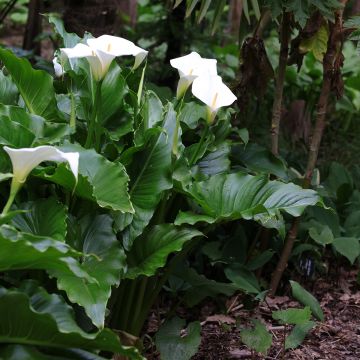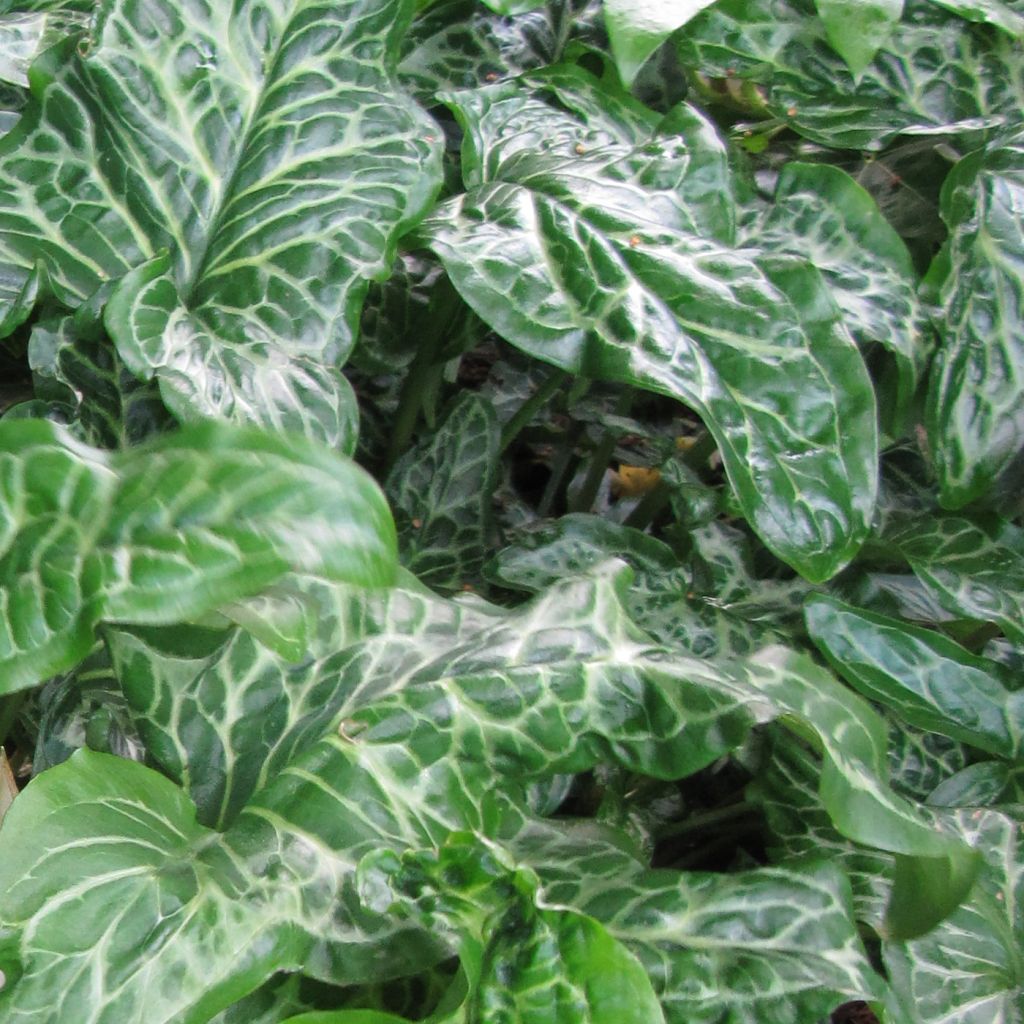

Arum italicum Marmoratum - Italian arum
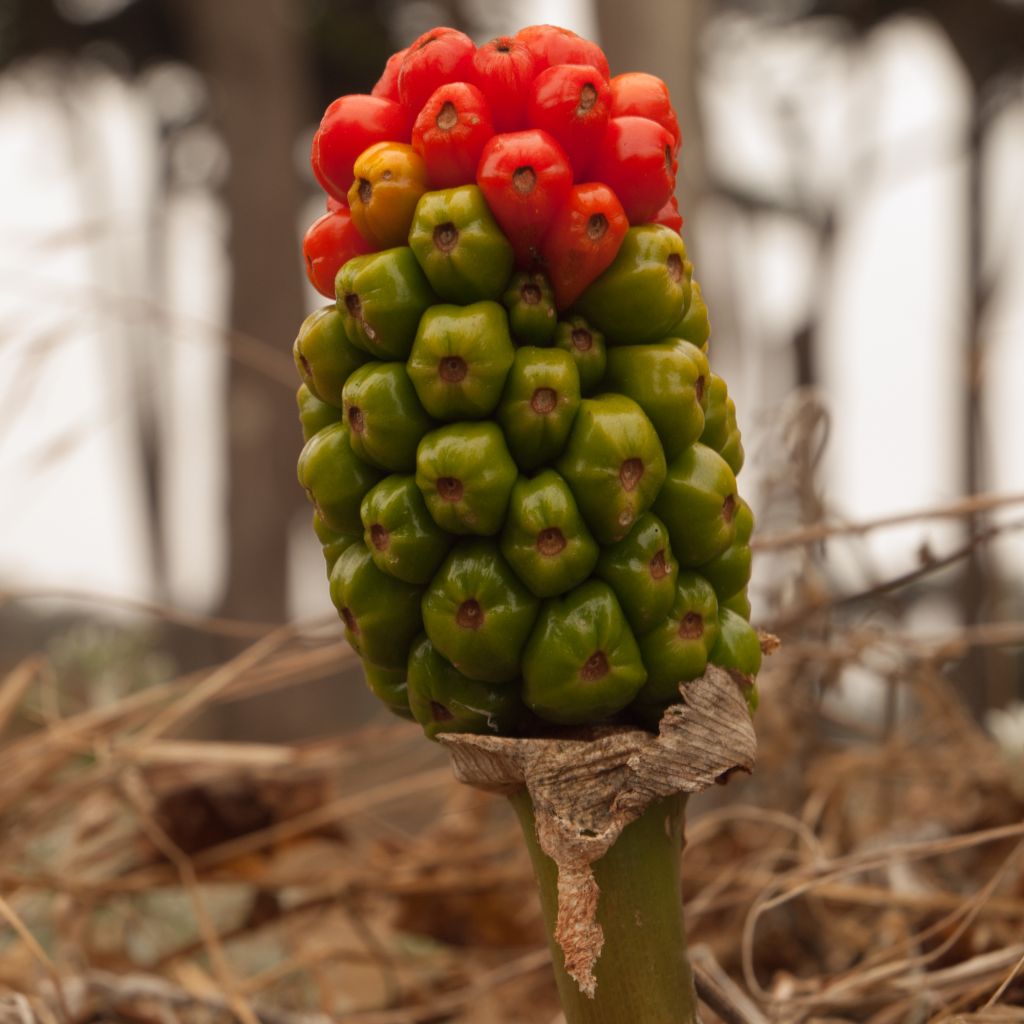

Arum italicum Marmoratum - Italian arum
Arum italicum Marmoratum - Italian arum
Arum italicum subsp. italicum Marmoratum
Italian arum, Italian lords-and-ladies
This item cannot be shipped to the selected country
Delivery charge from €5.90
More information
Schedule delivery date,
and select date in basket
This plant carries a 6 months recovery warranty
More information
We guarantee the quality of our plants for a full growing cycle, and will replace at our expense any plant that fails to recover under normal climatic and planting conditions.
From €5.90 for pickup delivery and €6.90 for home delivery
Express home delivery from €8.90.

Does this plant fit my garden?
Set up your Plantfit profile →
Description
Arum italicum subsp. italicum 'Marmoratum', also known as Italian Arum or false Arum, is a plant related to florist's Arums, preferring partial shade and fertile soils. Its growth cycle, adapted to Mediterranean climates, is characterized by the emergence of beautiful dark green foliage heavily marbled with white in late summer, as soon as the rains return. Shaped like a spearhead, it persists throughout the winter and disappears with the arrival of heat. The plant develops a white-green inflorescence in spring and produces a beautiful fruiting in late summer in the form of red and shiny berries arranged on a highly ornamental cluster. This unusual perennial is well suited to natural and wild gardens.
Arum italicum subsp. italicum 'Marmoratum' is a particularly ornamental form of Italian Arum, a tuberous perennial also known as Italian cuckoo pint or calf lily. This plant, belonging to the Arum family, is native to southern and central Europe. It is found in countries around the Mediterranean (Canaries, Morocco, Algeria, Tunisia), as well as in the United Kingdom, Switzerland, Turkey, Armenia, Georgia, Russia and up to Ukraine. 'Marmoratum' reaches 40cm (16in) in all directions after 2 to 5 years of cultivation. From its large oblong tuber divided into 3 parts, triangular leaves with dark green lamina and broad white veins emerge in October-November, before winter. The flowering takes place in April-May, in the form of a large whitish spathe that conceals a fleshy axis called the spadix. This spadix bears unisexual male or female flowers. Pollination is carried out by small flies attracted by the smell of the spadix. The flowering is followed by the formation of round and fleshy fruits, shining red, tightly packed together. This false Arum self-seeds spontaneously in the garden.
A robust perennial that thrives in the undergrowth of woodlands in a fresh, fertile, humus-rich but well-drained soil, the Arum italicum subsp. 'Marmoratum' is perfect for carpeting the base of shrub or tree beds in a garden that embraces nature. It can be associated with ferns, hostas, and bleeding hearts in a moist soil, or with Epimediums, bear's breeches, dead nettles, and periwinkles in a drier garden. It will also appreciate the surroundings of a water feature, as long as the soil it is planted in is not waterlogged all year round. It can also be planted en masse, under a row of evergreen shrubs.
Note: all parts of the plant are toxic if ingested due to the various saponins and alkaloids contained in the leaves, fruits, and rootstock. Use in phytotherapy is reserved for professionals.
Report an error about the product description
Arum italicum Marmoratum - Italian arum in pictures
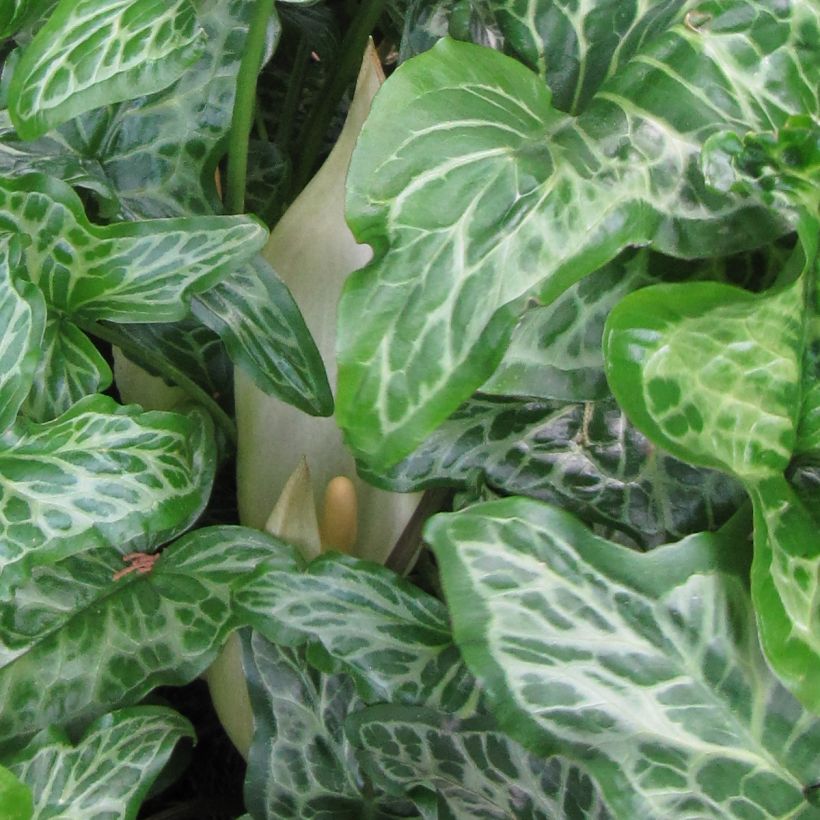

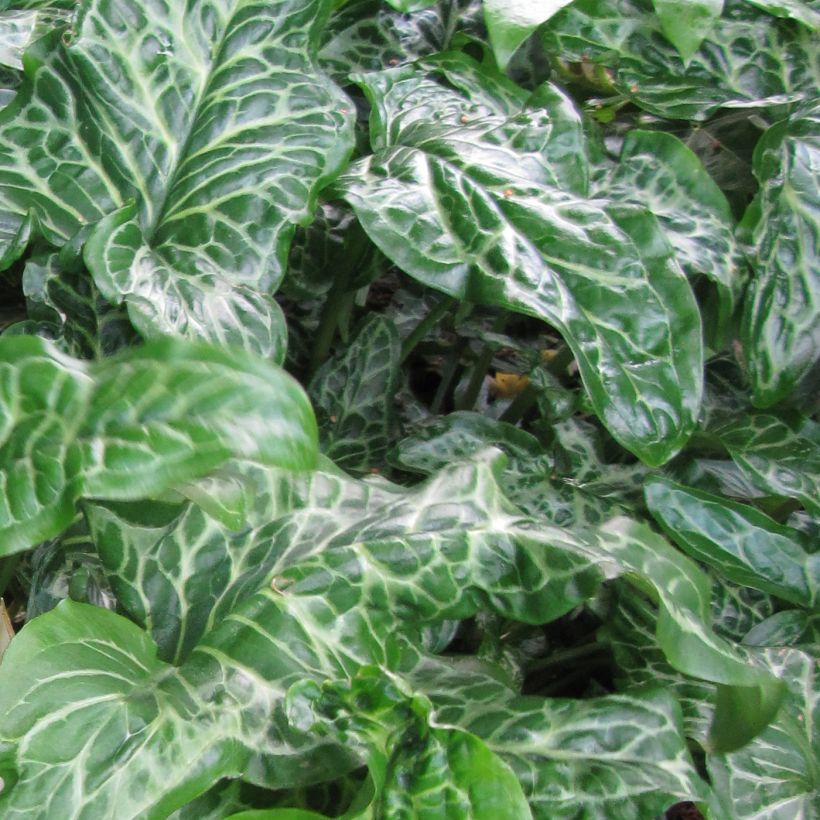

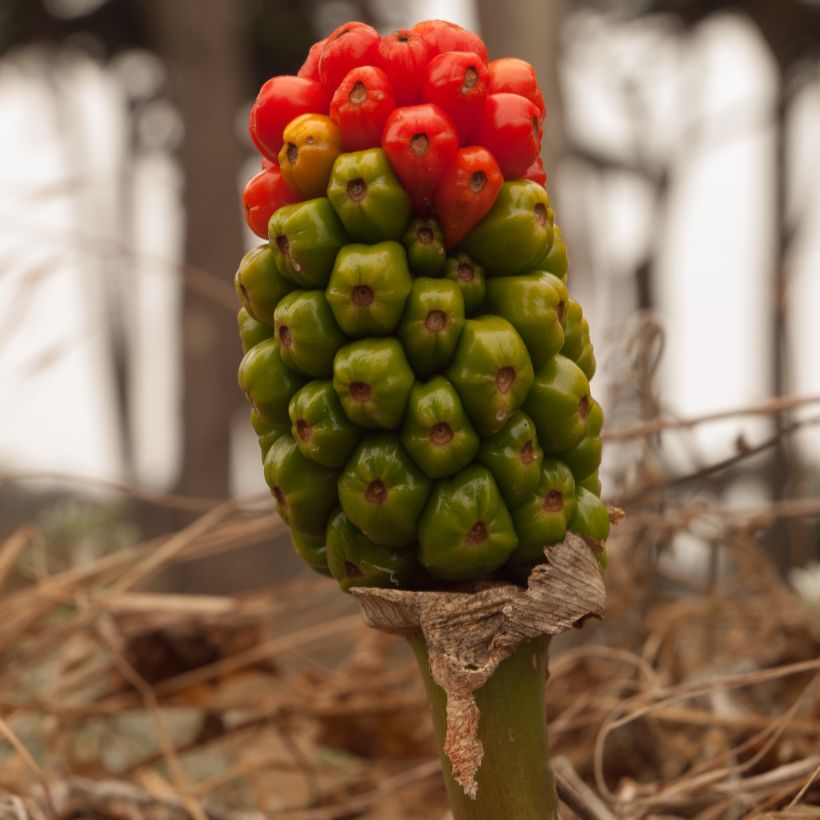

Plant habit
Flowering
Foliage
Botanical data
Arum
italicum subsp. italicum
Marmoratum
Araceae
Italian arum, Italian lords-and-ladies
Mediterranean
Other Arums
Planting and care
Plant the Italian Arum in spring or autumn, in a semi-shaded position, in a fertile, humus-rich soil, even clayey or limestone, but well-drained. Summer drought is well tolerated as it corresponds to the plant's resting period. This plant is not demanding in terms of soil type and also tolerates sandy and slightly acidic soils. Sunlight is tolerated in cool regions, while partial shade is preferred in dry and hot climates.
Planting period
Intended location
Care
-
, onOrder confirmed
Reply from on Promesse de fleurs
Haven't found what you were looking for?
Hardiness is the lowest winter temperature a plant can endure without suffering serious damage or even dying. However, hardiness is affected by location (a sheltered area, such as a patio), protection (winter cover) and soil type (hardiness is improved by well-drained soil).

Photo Sharing Terms & Conditions
In order to encourage gardeners to interact and share their experiences, Promesse de fleurs offers various media enabling content to be uploaded onto its Site - in particular via the ‘Photo sharing’ module.
The User agrees to refrain from:
- Posting any content that is illegal, prejudicial, insulting, racist, inciteful to hatred, revisionist, contrary to public decency, that infringes on privacy or on the privacy rights of third parties, in particular the publicity rights of persons and goods, intellectual property rights, or the right to privacy.
- Submitting content on behalf of a third party;
- Impersonate the identity of a third party and/or publish any personal information about a third party;
In general, the User undertakes to refrain from any unethical behaviour.
All Content (in particular text, comments, files, images, photos, videos, creative works, etc.), which may be subject to property or intellectual property rights, image or other private rights, shall remain the property of the User, subject to the limited rights granted by the terms of the licence granted by Promesse de fleurs as stated below. Users are at liberty to publish or not to publish such Content on the Site, notably via the ‘Photo Sharing’ facility, and accept that this Content shall be made public and freely accessible, notably on the Internet.
Users further acknowledge, undertake to have ,and guarantee that they hold all necessary rights and permissions to publish such material on the Site, in particular with regard to the legislation in force pertaining to any privacy, property, intellectual property, image, or contractual rights, or rights of any other nature. By publishing such Content on the Site, Users acknowledge accepting full liability as publishers of the Content within the meaning of the law, and grant Promesse de fleurs, free of charge, an inclusive, worldwide licence for the said Content for the entire duration of its publication, including all reproduction, representation, up/downloading, displaying, performing, transmission, and storage rights.
Users also grant permission for their name to be linked to the Content and accept that this link may not always be made available.
By engaging in posting material, Users consent to their Content becoming automatically accessible on the Internet, in particular on other sites and/or blogs and/or web pages of the Promesse de fleurs site, including in particular social pages and the Promesse de fleurs catalogue.
Users may secure the removal of entrusted content free of charge by issuing a simple request via our contact form.
The flowering period indicated on our website applies to countries and regions located in USDA zone 8 (France, the United Kingdom, Ireland, the Netherlands, etc.)
It will vary according to where you live:
- In zones 9 to 10 (Italy, Spain, Greece, etc.), flowering will occur about 2 to 4 weeks earlier.
- In zones 6 to 7 (Germany, Poland, Slovenia, and lower mountainous regions), flowering will be delayed by 2 to 3 weeks.
- In zone 5 (Central Europe, Scandinavia), blooming will be delayed by 3 to 5 weeks.
In temperate climates, pruning of spring-flowering shrubs (forsythia, spireas, etc.) should be done just after flowering.
Pruning of summer-flowering shrubs (Indian Lilac, Perovskia, etc.) can be done in winter or spring.
In cold regions as well as with frost-sensitive plants, avoid pruning too early when severe frosts may still occur.
The planting period indicated on our website applies to countries and regions located in USDA zone 8 (France, United Kingdom, Ireland, Netherlands).
It will vary according to where you live:
- In Mediterranean zones (Marseille, Madrid, Milan, etc.), autumn and winter are the best planting periods.
- In continental zones (Strasbourg, Munich, Vienna, etc.), delay planting by 2 to 3 weeks in spring and bring it forward by 2 to 4 weeks in autumn.
- In mountainous regions (the Alps, Pyrenees, Carpathians, etc.), it is best to plant in late spring (May-June) or late summer (August-September).
The harvesting period indicated on our website applies to countries and regions in USDA zone 8 (France, England, Ireland, the Netherlands).
In colder areas (Scandinavia, Poland, Austria...) fruit and vegetable harvests are likely to be delayed by 3-4 weeks.
In warmer areas (Italy, Spain, Greece, etc.), harvesting will probably take place earlier, depending on weather conditions.
The sowing periods indicated on our website apply to countries and regions within USDA Zone 8 (France, UK, Ireland, Netherlands).
In colder areas (Scandinavia, Poland, Austria...), delay any outdoor sowing by 3-4 weeks, or sow under glass.
In warmer climes (Italy, Spain, Greece, etc.), bring outdoor sowing forward by a few weeks.

































